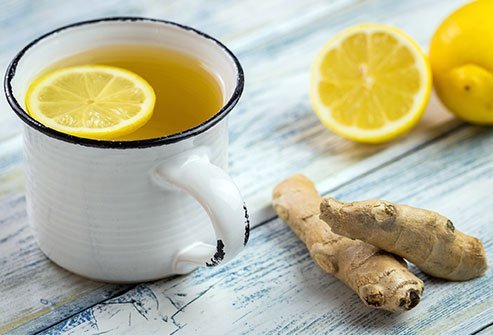
The nose from the outside appears as a solid structure with two straight passages for air that finds its way into the lungs. In reality however, it is an intricate system of passages and empty spaces that contain only air. The hollow spaces are pairs, four of them located in each cheekbone, behind the nose, behind the eyebrows and between the eyes. And what function do they have? Among their many functions is the one of giving resonance to our voices which otherwise would not carry very far. But these hollows are meant primarily for conditioning the air that we breathe in. The air we breathe in is too dry for our lungs and it needs to be saturated with moisture before it goes. It is in the sinuses that this happens.
The Function Of Paranasal Sinuses
The sinuses and the lining together produce about a quarter liter of secretions every day. These secretions are in normal conditions swept into the throat where they flow down. Trouble starts when the secretions, in the presence of an infection which could be due to flu or cold, air pollution or dust, increase to a point where the sinuses flood. The membranes also swell, narrowing the exit points. Soon enough, the mucus becomes a breeding ground for bacteria. Sinus blockages can be acute or chronic. An acute sinus blockage lasts from a week to ten days and is accompanied by pain mild to so severe it can be termed bone shattering. Chronic sinusitis rarely cause headaches but it is a more toxic condition because bacteria has become so entrenched, no antibiotic can dislodge them.
Migraine Or Sinus Headache?
Often migraines and sinus headaches are misdiagnosed, with one being treated instead of the other. The origin of both is very different. Migraines are triggered by stress, certain foods, menstruation in women and direct exposure to bright sunlight. Sinus headaches mostly affect the front of the face and the forehead. Sinus headaches rarely trigger nausea whereas in migraine, nausea is a common feature. Migraines are one-sided with intense sensitivity to noise and light being a feature. Sinus headaches can be triggered by the AC blowing on your face or any blast of cold air for many hours. A stuffy room can also set it off.
Hydration Is The Key To Sinus Health
You can help prevent sinus attacks, if you are prone to it, by protecting yourself against cold and flu. Keep away from people who have colds and flu. Wash your hands with soap frequently and do not share drinking utensils with anyone. Drinking plenty of water helps as the secretions remain loose. Ensure that you down at least 8 glasses of water every day. Dry air only worsens a sinus condition. Keep the room moist using a humidifier. Keep your house free of pollutants. If you find cigarette smoke irritating request the no one smoke in the house. Indulging in smoking is like asking for a sinusitis attack. Sinus headaches respond favourably to hot foods. In fact eating jalapeno peppers have been touted as a way to deal with stuffy sinuses. The capsaicin in the hot peppers gets circulation going and it opens pores so that mucus flows out naturally.
Inhalation Helps
Allergies do not cause a sinus attack but an allergy can make an existing problem worse. Find out what triggers off allergic reaction in you and keep away from those. When you feel congestion and pain, inhalation is one thing that can bring relief. Boil a pan of water and add couple of drops of Eucalyptus Oil to it. Place in front of you and cover your head and the pan with a towel to trap the steam. Breathe in deeply, closing one nostril at a time. Do this at least twice a day until the problem clears up. Using a decongestant nasal spray can ease a sinus headache by reducing the inflammation. Salt water nasal sprays also do the job of loosening the mucus. The latest therapy to deal with sinusitis is using the neti pot. Water from the neti pot flows into one nostril and flows out through the other.
The Neti Pot
The neti pot is like a small tea pot but with a shorter spout. The saline water has to be made according to the instructions of the manufacturer of the neti pot. Fill the pot with the solution. Stand with your head over the sink. Tilt your head to one side at about 45 degrees. Insert the spout of the pot into the higher nostril. There should be no gap between the spout and the nostril. Lift the pot slightly so that the water from the pot flows into the raised nostril and out of the lower nostril. Breathe through your mouth during the procedure. Blow your nose gently into a tissue to clear the mucus. Tilt your head to the other side and flush the other nostril the same way as you did first nostril. The neti pot should be disinfected and washed with dish wash liquid. Leave to dry.
Breathing In Fragrant Oils
Massaging the sinus areas brings some relief. Use the fingertips to massage in circular motion the areas that feel the pain. Go over the forehead and the temples. The warmth created may help the drainage. Stop after five minutes. Get a friend to give you a forehead massage. Starting from the center of the forehead, get them to massage using only thumbs in upward and sideward directions alternating each time. Inhaling oils like thyme, peppermint and cinnamon also helps to open out clogged sinuses. You can follow the same routine as with normal steam inhalation. A variety of teas are said to help with sinusitis. Try ginger tea. Grate an inch of ginger into a pan. Pour in a cup of water and bring to the boil. Turn off the heat and infuse for 10 minutes. Sweeten with a tablespoon of honey and sip when it is quite hot.